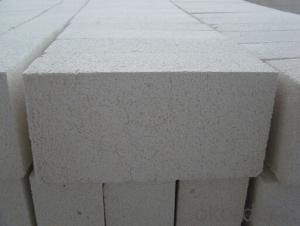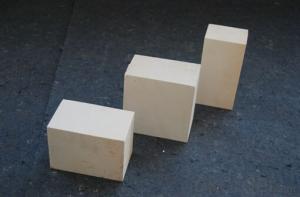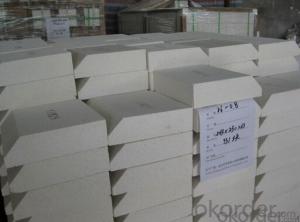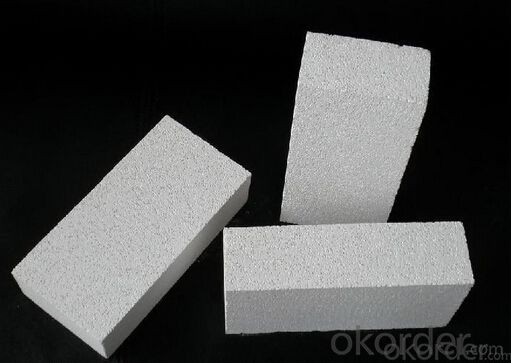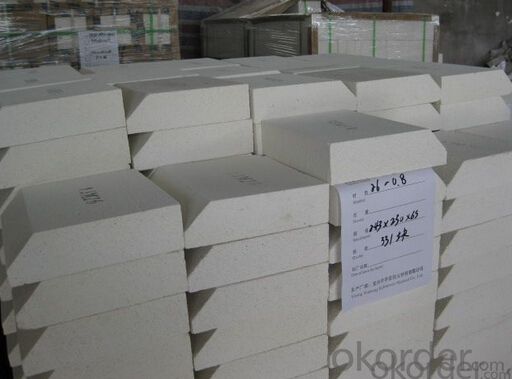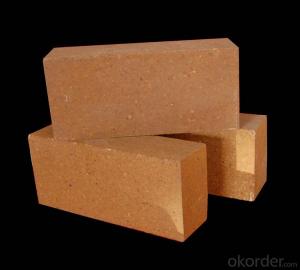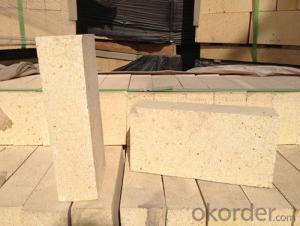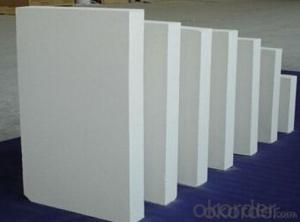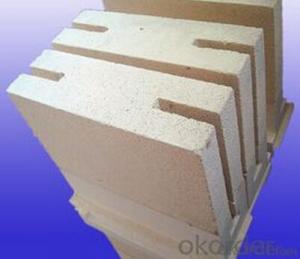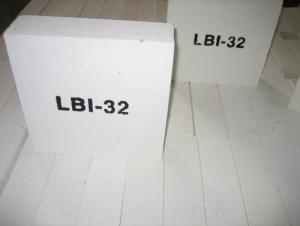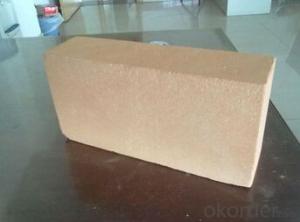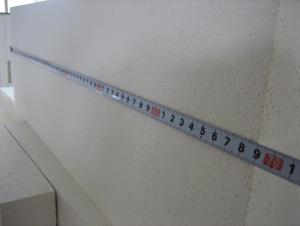Insulating Fire Brick - Refractory Mullite Jm 28
- Loading Port:
- Shanghai
- Payment Terms:
- TT OR LC
- Min Order Qty:
- 5000 kg
- Supply Capability:
- 100000 kg/month
OKorder Service Pledge
OKorder Financial Service
You Might Also Like
Top insulation ceramic fiber blanket
General information of ceramic fiber blanket
Cmax ceramic fiber blanket is made of high quality kaolin clay, centrifugal high purity alumina and silica or blowing process. It's no asbestos. Double side acupuncture for easy installation provides a lot of tension or strength of the blanket.
Products are divided into standard, high pressure, HA and Hz, respectively, corresponding to the highest service temperature of 1000, 1100, 1200, and 1350
Characteristics of ceramic fiber blanket
Heat resistance
Light weight
Low thermal conductivity
Low heat storage
Thermal shock toughness
High tensile strength
Application of ceramic fiber blanket
Refractory fiber lining for petrochemical process heating furnace
Heat treatment furnace or intermittent (shuttle) kiln heat surface lining
General oven standby insulation
Heat sealing or kiln kiln car door
Electrical insulation
Ceramic fiber blanket
Common problem solutions
1. What products do you have?
We have all kinds of refractory bricks, refractory casting materials, mortar, cement, ceramic fiber products, etc..
Or you can browse our products to choose what you need.
2. How to control product quality?
With strict quality control system throughout the material selection and production process, we have the quality of refractory materials and ceramic fiber products to meet customer requirements.
From the selection of raw materials, the quality of our control to start. The quality certificate of the raw material is required, each batch of the products are to be tested in the use of the forward line. In the production process, the quality control by the workers, and then each piece of classification, and through the quality supervision and inspection.
3. Can you give me a brief introduction to the application of your product?
My company is mainly engaged in refractories in the steel, cement, glass, ceramics, petrochemical, electric power and other industries.
4. What information do you need if I need you?
In order to select the right products, we will provide us with information, such as the United States, technical data, order quantity, product application, etc..
If you have any questions, please contact us.

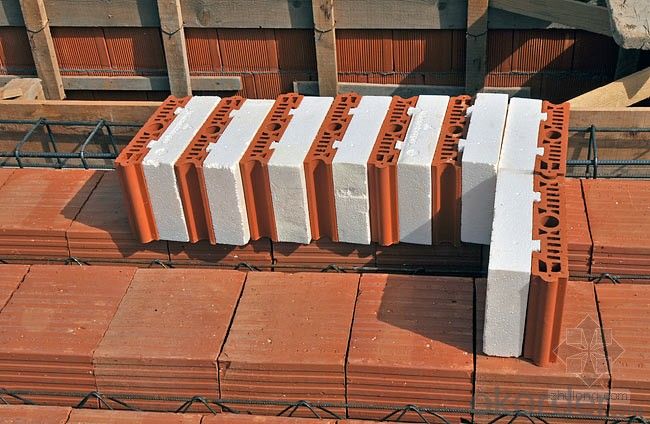
FAQ
1. Which products do you have?
We have all kinds of refractory brick, castable, mortar, cement, ceramic fiber products, etc.
Or you could browse our products to choose what you need.
2. How do you control the products quality?
With strict quality control system throughout the materials selection and production process, our refractory and ceramic fiber products quality is effectively controlled to meet customer requirements.
From the raw materials selecting, our quality control begin. The quality certificates of raw materials are required and each batch will be tested before using. During production, the quality control are conducted by workers and then each piece will be sorted and examined by quality supervise.
3. Can you give me a brief introduction of the application of your products?
We are mainly specializing in the refractory materials in iron and steel, cement, glass, ceramics, petrochemical, electric power Industry, etc.
4. If I need your offer, what information do you need?
In order to choose suitable products, it will be appreciated to provide us the information, such us specification, technical data, order quantity, products application etc.
If any question, please contact us freely.
- Q: Can insulating fire bricks be used in low-temperature applications as well?
- Yes, insulating fire bricks can be used in low-temperature applications. Insulating fire bricks are designed to have high thermal insulation properties, which means they can effectively prevent heat transfer. This makes them suitable for use in both high-temperature and low-temperature environments. In low-temperature applications, insulating fire bricks can help to minimize heat loss and maintain a stable temperature. They can be used to insulate walls, floors, and roofs of structures or equipment that require temperature control, such as cold storage facilities, refrigerators, or freezers. Insulating fire bricks are also commonly used in low-temperature furnaces and kilns, where they help to minimize energy consumption and maintain a consistent temperature throughout the heating process. Their high insulating properties ensure that the heat generated inside the furnace or kiln is effectively contained, reducing heat loss and improving overall energy efficiency. Furthermore, insulating fire bricks are lightweight and easy to handle, making them convenient for various low-temperature applications. They are also resistant to thermal shock and offer excellent structural stability, ensuring long-lasting performance even in challenging environments. Overall, insulating fire bricks can be effectively utilized in low-temperature applications to enhance energy efficiency, temperature control, and structural stability.
- Q: Are insulating fire bricks resistant to high-velocity gas flow erosion?
- Yes, insulating fire bricks are generally resistant to high-velocity gas flow erosion. These bricks are specifically designed to withstand extreme temperatures and harsh conditions, including erosive environments. They are made from high-quality refractory materials, such as alumina and silica, which have excellent resistance to erosion and corrosion. Additionally, insulating fire bricks have a low thermal conductivity, which helps to reduce heat loss and maintain their structural integrity even under high-velocity gas flow. However, it is important to note that the exact resistance may vary depending on the specific composition and manufacturing process of the insulating fire bricks.
- Q: What are the common sizes of insulating fire bricks?
- The common sizes of insulating fire bricks typically range from 9x4.5x2.5 inches to 9x4.5x3 inches.
- Q: Are insulating fire bricks resistant to moisture penetration?
- Yes, insulating fire bricks are resistant to moisture penetration.
- Q: Can insulating fire bricks be used in residential fireplaces?
- Yes, insulating fire bricks can be used in residential fireplaces. These bricks are designed to withstand high temperatures, making them an ideal choice for lining the interior of a fireplace. They help to retain heat and improve the overall efficiency of the fireplace. Additionally, insulating fire bricks are lightweight and easy to install, making them a practical option for residential use.
- Q: Can insulating fire bricks be cut or shaped to fit specific applications?
- Yes, insulating fire bricks can be cut or shaped to fit specific applications. They are often made of soft and porous materials, such as ceramic fiber or lightweight refractory materials, which can be easily cut using common tools like saws or knives. This flexibility allows for customization and fitting into various shapes and sizes to meet specific requirements in different applications.
- Q: Are insulating fire bricks resistant to ultraviolet radiation?
- Typically, insulating fire bricks do not possess resistance to ultraviolet (UV) radiation. These bricks are created to endure high temperatures and offer thermal insulation, but they are not specifically designed to endure UV radiation. UV radiation can lead to deterioration and color changes in certain materials, including certain brick types. Consequently, if insulating fire bricks are exposed to prolonged UV radiation, their performance and durability may decline. If UV resistance is necessary for a particular use, it is recommended to investigate other materials or contemplate additional protective actions like applying UV-resistant coatings or providing shade.
- Q: Can insulating fire bricks be used in the construction of kilns?
- Yes, insulating fire bricks can be used in the construction of kilns. Their high insulating properties help to retain heat and improve energy efficiency in the kiln, making them a popular choice for lining the walls and floor of kilns.
- Q: Do insulating fire bricks require any special installation techniques?
- Yes, insulating fire bricks require special installation techniques. These bricks are typically lightweight and have low thermal conductivity, making them highly effective in insulating applications. To ensure proper installation, it is important to follow the manufacturer's guidelines and use appropriate tools, such as refractory mortar or adhesive, to securely bond the bricks together. Additionally, proper curing and drying procedures should be followed to avoid any potential cracking or damage during the installation process.
- Q: Do insulating fire bricks have a high thermal stability?
- Insulating fire bricks possess a remarkable level of thermal stability, as they are specifically engineered to endure elevated temperatures without degradation or the loss of their insulating properties. Crafted from top-notch refractory materials capable of withstanding extreme temperatures, these bricks are exceptionally well-suited for situations where thermal stability is of utmost importance. Their low thermal conductivity enables them to effectively trap and retain heat, thus preventing its escape. Consequently, they are particularly valuable in environments necessitating consistent temperatures, such as furnaces, kilns, and various high-temperature industrial processes. In summary, insulating fire bricks are renowned for their exceptional thermal stability, rendering them a dependable option for applications demanding insulation and safeguarding against high temperatures.
Send your message to us
Insulating Fire Brick - Refractory Mullite Jm 28
- Loading Port:
- Shanghai
- Payment Terms:
- TT OR LC
- Min Order Qty:
- 5000 kg
- Supply Capability:
- 100000 kg/month
OKorder Service Pledge
OKorder Financial Service
Similar products
Hot products
Hot Searches
Related keywords

